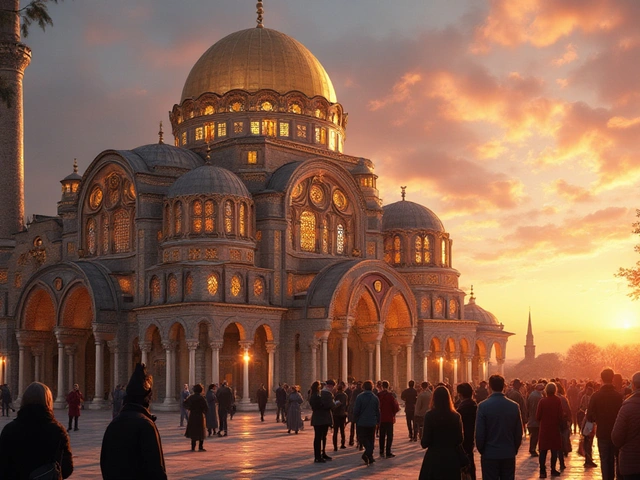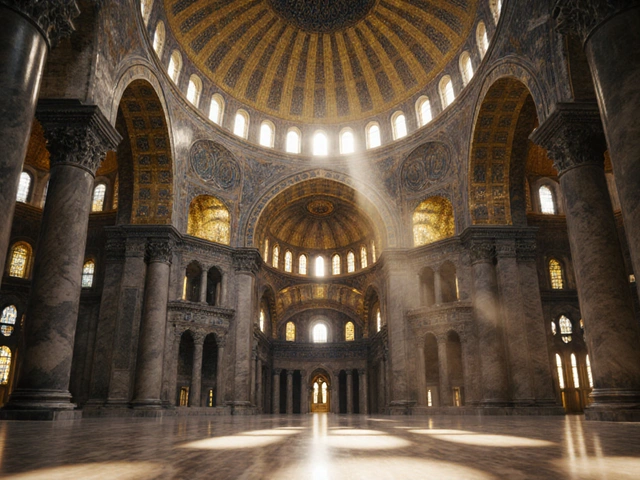Introduction to Byzantine Architecture
Byzantine architecture, a term that evokes images of grand domes, heavenly mosaics, and an aura of divine mystery, represents one of the most fascinating periods in architectural history. Originating in the Eastern Roman Empire around the 4th century AD, this distinctive style blended Greek, Roman, and Middle Eastern influences to create something utterly unique. It wasn't just about creating spaces for worship or governance; it was about manifesting heaven on earth, a concept deeply embedded in its design principles. As you walk through the remnants of Byzantine glory, you're not merely exploring ancient buildings; you're stepping into a realm where every arch, dome, and mosaic tells a story of faith, art, and power.
The Significance of Religious Icons in Byzantine Architecture
In the heart of Byzantine artistic expression lie the religious icons, more than just elaborate decorations, they served as tangible connections between the divine and the mortal. Icons weren't mere adornments but were imbued with deep theological significance, believed to be windows to heaven. Their presence in Byzantine architecture is pivotal, transforming the interiors of churches and basilicas into sacred spaces where heaven and earth intersect. The depiction of biblical scenes, saints, and Christ himself in these icons was governed by strict iconographic rules, ensuring that each image conveyed a clear and orthodox theological message. The veneration of icons became so integral to Byzantine society that it sparked the Iconoclastic Controversy, a fierce debate over the role of imagery in worship that echoed through the empire's history.
Masterful Mosaics: A Testament to Byzantine Craftsmanship
Byzantine mosaics, renowned for their dazzling beauty and intricate detail, represent the zenith of this civilization's artistic achievements. Crafted from countless tiny pieces of colored glass, stone, and gold, these mosaics were more than mere art; they were a testament to the Byzantines' quest for a visual narrative of their faith and ideals. The crafting of mosaics was a laborious process, demanding not only artistic skill but a profound spiritual purpose, as these images were meant to educate and inspire the faithful. Iconic structures like the Hagia Sophia in Constantinople (modern-day Istanbul) showcase the pinnacle of mosaic art, where scenes from the Gospels come alive on a monumental scale, enveloping worshippers in a divine spectacle.
Domes and Divine Light: Architectural Innovations
The architectural landscape of Byzantium was dominated by domes, symbols of the heavens, arching majestically over the faithful. The innovation of the pendentive dome, in particular, allowed Byzantine architects to achieve new heights in church design, enabling the construction of large, centrally planned buildings bathed in ethereal light. This light, filtered through windows nestled in the dome's base, was not merely a design element but a theological statement, representing the divine illumination of the church interior. Structures like the Hagia Sophia demonstrated this principle brilliantly, with its central dome seemingly suspended by light, creating an otherworldly atmosphere that blurred the lines between the material and the divine.
The Legacy of Byzantine Architecture in the Modern World
The influence of Byzantine architecture extends far beyond its time, inspiring architects and artists through the ages. Its principles of harmony, balance, and the integration of art with architecture have been echoed in various styles, from the Renaissance to modernism. Today, the legacy of Byzantine architecture is evident not only in religious buildings but in the design principles that prioritize light, space, and narrative. As we look back at the magnificent structures and the artistic treasures they house, it's clear that the Byzantines were not just building churches; they were crafting a vision of heaven on earth. Their dedication to beauty, spirituality, and innovation continues to inspire and challenge us, reminding us of the power of architecture to move, teach, and transform.




